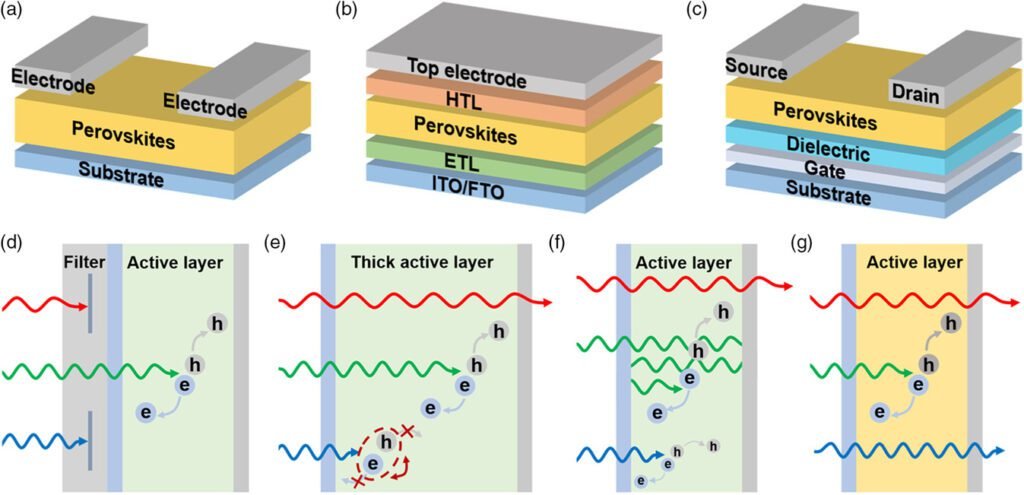In addition to convert light in electrical energy, the perovskite material also has a great number of applications.
To know about perovskite’s application on solar energy, click on the following link.
Perovskite on solar energyClick here
Perovskite applications on electronic components
Sensor examples
Currently, researchers are discovering that many perovskites materials can detect a great number of physical quantities. Perovskite made of metal halide (metal with a halogen element), have photoelectric features, that can be used in photodetectors, such as: adjustable bandgap, good capacity to collect light and good carrier charge behavior.

Depending on base material, perovskite photodetectors can detect from infrared to X-rays. Not only detect light, semiconductors perovskites have thermal stability, making it the base of gas sensors. For example, perovskites that have cobaltates, titanates and ferrites can detect carbon monoxide, nitrogen dioxide, methanol, ethanol and hydrocarbon.
Light emitter components
The metal halide perovskite semiconductors can be a low cost alternative for LED manufacturing. LEDs base on perovskite, or PeLEDs have wavelength adjustment and high color purity, by that, the color does not have shades of grey and has high saturation level.

Unlike the current technology for LED manufacturing, metal halide perovskites with organic and inorganic composition, does not require high temperatures for manufacturing.


Eventually, the next generation of displays and televisions can be made of PeLEDs. However, it’s still necessary to improve stability and efficiency. In addition to that, nanocrystals made of metal halide perovskite can become the gain medium of quantum dot (QD) lasers. Due to characteristics such as, tolerance to defects, easier synthesis, high photoluminescence quantum yield and adjustable band gap.

Quantum dot lasers can be useful in telecommunications, displays, sensors, quantum computing, etc.


